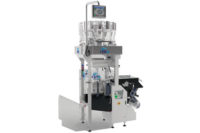Editor’s Note
Of Machines and Men

Robots have done — and will continue to do — wonders for the labor force, in terms of helping relieve repetitive work and more mundane tasks for workers. But are we taking too many jobs away from people?
Some statistics state that candidates for manufacturing plant work cannot be found. This means that the combination of robotics and artificial intelligence (AI) has created a sort of win-win for companies who can’t find workers. However, will this continue to be the case? Will your job or your employees be forced out by a piece of machinery with a brain of its own? Not likely.
Though robotics may seem to have replaced a large chunk of the workforce recently, the truth is that robots began taking the place of workers doing simple tasks, such as pick-and-place, in the 1960s in automotive factories. And automation has increasingly pushed out all but the most skilled workers.
Worker safety was one of the major reasons to adopt robots early on. And according to an article in Forbes, we don’t hear much about the improvements in injury rates thanks to robotic handling. Strenuous and repetitive tasks, such as palletizing or dangerous parts handling, were handed to robots, reducing human injury.
The production amount required and wages needed are not in sync. And that is likely why the workforce for these positions is scarce.
A few respondents on a LinkedIn post about that same topic say robots are leaving the bad jobs for humans. One HR professional replied that “reskilling employees will become critical for companies who want to take responsibility for the social impact of automation.”
According to a 2018 survey by business consulting firm Korn Ferry, 63 percent of HR professionals say AI has already changed the way they recruit — and 69 percent say that it has helped them source better candidates.
Firms can now use this software to automatically crawl the Web for the kind of job candidates they want, auto-interview them via text chat or video on-the-spot, and then auto-schedule the most promising candidates for follow-up interviews. This is used in Google Hire, ZipRecuiter, Robot Vera, Mya and the like.
Though automated machines and robots can handle heavy loads and some complex tasks, there are other, more complex jobs with several variables that may not fit the bill of the cost of the robot.
Check out the Packaging Outlook feature to see which sectors are growing and analysis and forecasts by experts.
KRISTEN KAZARIAN
Looking for a reprint of this article?
From high-res PDFs to custom plaques, order your copy today!








